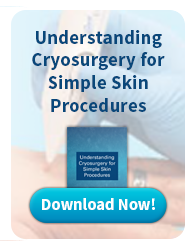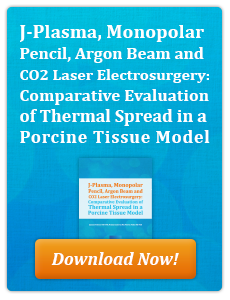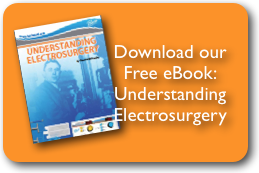The risk for skin cancer actually increases as one ages, due to the fact that people have spent a lifetime getting more sun exposure. However, age is just one factor and there are many others that can contribute to a higher risk of skin cancer. One sure-fire sign of a high risk for any cancer is if a person has ever had some form of non-melanoma skin cancer in the first place. When you treat patients for conditions like basal cell carcinoma or even squamous cell carcinoma, they may not make the link between this type of non-agressive neoplasm and other more serious types of cancer. It’s important to make patients aware that once they have any type of non-melanoma skin issue, even if it is not life-threatening, it means that they need to be even more careful about the potential for other types of cancer as well.
Read MoreBovie Medical Insights
How DERM 101&102 Can Help with Post Cancer Treatment
Posted by Bovie Medical on Wed, Dec 2, 2015 @ 03:00 PM
Topics: Skin Cancer, High Frequency Desiccator, Derm 101 and Derm 102
How to Prepare Your Family Practice for the Rise of Non-Melanoma Skin Cancer
Posted by Bovie Medical on Wed, Oct 21, 2015 @ 11:00 AM
Over the last two decades, incidents of non-melanoma skin cancer have been on a dramatic rise around the world. Non-melanoma skin cancers (NMSC) typically come in two types: basal cell carcinoma (BCC) and squamous cell carcinoma (SCC). While rarely life-threatening, if not properly treated, they represent a threat to disfigure an individual, or they can cause itching, pain or numbness as they spread along nerve tissue.
Read MoreTopics: Skin Cancer, High Frequency Desiccator, cryosurgery, non-melanoma
Using the Bovie Aaron Desiccators for Skin Procedures
Posted by Bovie Medical on Wed, Jun 24, 2015 @ 10:06 AM
A high-frequency desiccator is an electrosurgical device which allows the physician to perform simple, outpatient procedures to treat a number of common skin lesions. Small superficial skin lesions such as small angiomas, nevi and skin tags are ideal candidates for this approach. Utilizing a treatment electrode that remains cool to the touch, electrical energy is transferred to the tissue causing excitation and effectively destroying the lesion with very little, if any, discomfort to the patient.
Read MoreTopics: Bovie Medical Corporation, High Frequency Desiccator, electrosurgical device
2 Specialty Bovie ESU Devices for Skin Surgery
Posted by Bovie Medical on Thu, May 21, 2015 @ 11:00 AM
When confronted with performing minor surgical skin procedures like skin tag removal and the removal of skin lesions, family practice physicians often find themselves becoming frustrated with the more common tools that are currently available. A majority of practitioners find that the power levels of these devices are often much higher than what is truly required to complete many simpler, superficial skin procedures, and the expenses incurred with the use of most conventional high frequency desiccators on the market today are much higher than they need to be. The average initial cost alone of these larger, more powerful than necessary units is often $850.00 or more.
Read MoreTopics: product lineup, Bovie Medical, dermatology, skin problems, High Frequency Desiccator
Seven Uses of a High Frequency Desiccator Device
Posted by Bovie Medical on Fri, Mar 27, 2015 @ 08:00 AM
More than eighty years ago, Dr. William Bovie invented a device that generated electrical current for use in surgery. Since then, Bovie, the company has used the science behind his electrosurgical findings to develop a robust line of energy-based devices to support the physician office, surgery centers and highly demanding operating rooms. Electrosurgery devices are often misconstrued as a device only for complex surgical procedures; but the modern medical practice can now use low-watt electrosurgery devices for a variety of in-office procedures.
Read MoreTopics: Bovie Medical, Bovie, Aaron products, High Frequency Desiccator with Cut, High Frequency Desiccator











